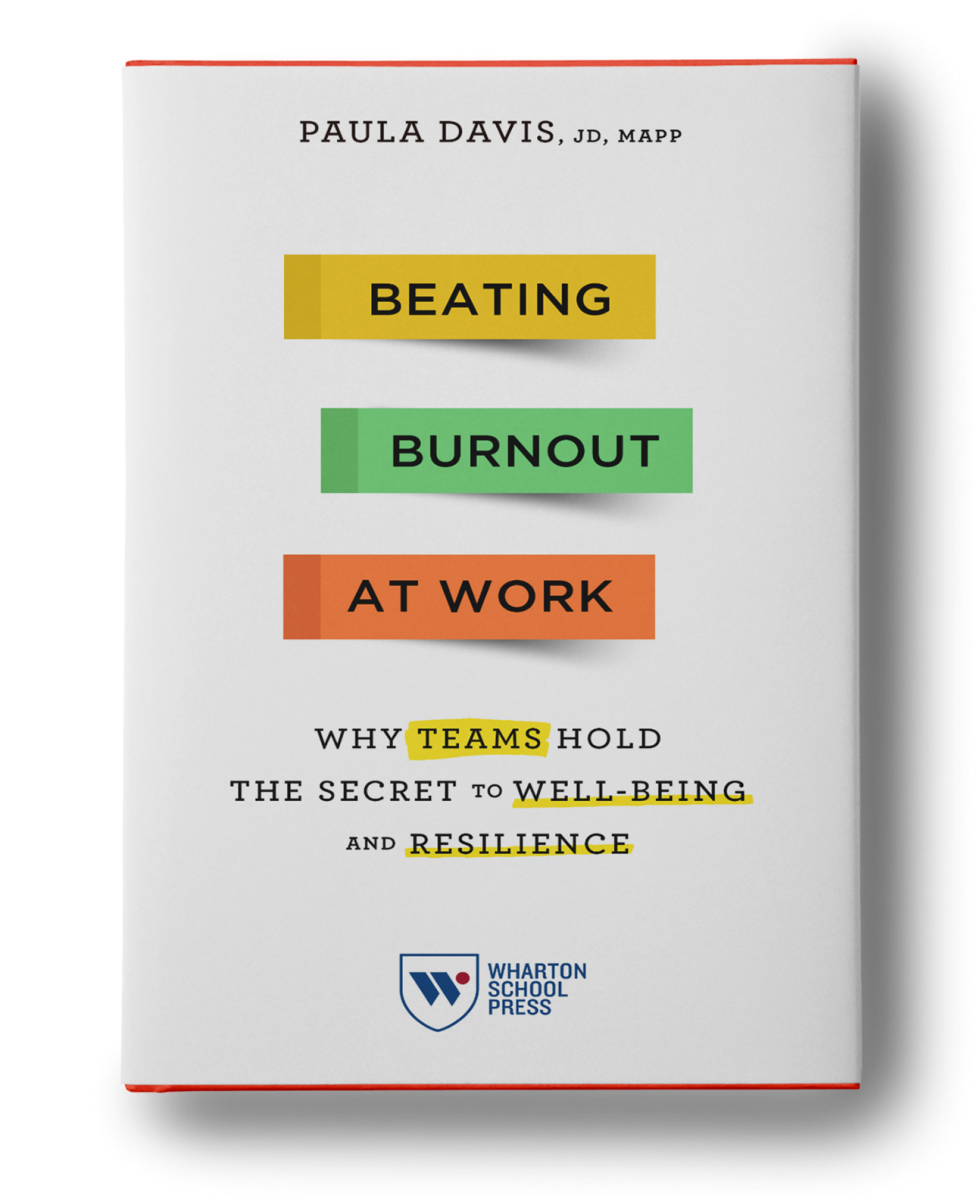I burned out during the last year of my law practice, and I spent a lot of time wondering what I did to cause it. I assumed that I had poor stress management skills or that something else about me needed to be fixed or changed. That’s the message that many people are left with in the burnout discussion – that it’s simply an individual issue that can (and should) be fixed with self-care strategies. As I learned, it’s not that simple.
People often ask me what they can do to prevent burnout. An ER physician contacted me several months into the pandemic because she was concerned about burnout on her team. She asked, “Paula, what do I tell the doctors when they ask me what they can do to prevent burnout in their careers?” I told her that it’s probably like what you would say to your patients – treating the symptoms is a start, but to actually fix the problem you also have to address the underlying causes.
The very first step, though, is to acknowledge that we have been talking about burnout in the wrong way, and the conversation needs to change.
Here are a few things I’ve learned studying the topic for more than 10 years:
- Burnout is not an interchangeable word with general stress. Stress exists on a continuum and becomes something more like burnout when you experience chronic exhaustion, cynicism, and inefficacy (lost impact). The former lawyer in me loves the necessity for precise language here because the term burnout is often used too loosely or in the wrong context to describe general tiredness or just having a bad day when it’s neither of those things.
- Burnout is a workplace issue. I define burnout as the manifestation of chronic workplace stress, and the World Health Organization updated definition of the term makes clear that “burnout refers specifically to phenomena in the occupational context and should not be applied to describe experiences in other areas of life.”
- Burnout is complex. People over-simplify burnout when they only focus on one of the big symptoms of it – exhaustion – and prescribe self-help remedies like sleeping more, time management techniques, or exercising as quick fixes. However, the bigger factors driving burnout are found in your workplace environment, how your boss leads, the quality of your team, and even macro-level issues like changing industry regulations that shift organizational priorities, which influence how leaders lead their teams, which then impacts how frontline workers work.
In order for organizations to reduce burnout, they must address the causes of it (and apply systemic remedies). Burnout is caused by an imbalance between your job demands (aspects of your work that take consistent effort and energy) and job resources (aspects of your work that are motivational and energy-giving), and there are six core job demands organizations, leaders, and teams need to reduce in order to decrease the likelihood of burnout:
- Lack of autonomy (having some choice as to how and when you perform the tasks related to your work)
- High workload and work pressure (particularly problematic in combination with too few resources)
- Lack of leader/colleague support (not feeling a sense of belonging at work)
- Unfairness (favoritism; arbitrary decision-making)
- Values disconnect (what you find important about work doesn’t match the environment you’re in)
- Lack of recognition (no feedback; you rarely, if ever, hear thank you)
These are organizational issues that can’t be fixed with yoga, meditation, or wellness apps. In fact, three of these job demands – workload, having low autonomy, and lack of leader/colleague support – are among the top 10 most prominent workplace issues that impact your health and longevity.
Shifting the burnout conversation may feel like a big challenge for busy leaders, but in reality, building a positive culture at work starts one team at a time, deploying “TNTs” – tiny noticeable things – consistently. Importantly, these behaviors need to be modeled and supported by leaders. Here are 10 TNTs that cost no money, take very little time, and as I have discovered, can build the type of positive cultures needed to prevent burnout (and more directly address the job demands listed above):
- Say thank you more (probably much more) than your current practice
- Offer in-time feedback to peers and direct reports
- Be clear when giving assignments and talk with other senior leaders in order to minimize conflicting requests and ambiguity (two known accelerants of burnout)
- Make constructive feedback a learning-focused, two-way conversation
- Keep people informed of changes
- Keep track of and talk about small wins and successes
- Encourage team members
- Provide a rationale or explanation for projects, goals, and big-picture vision
- Clarify confusing and missing information related to roles and tasks
- Prioritize “you matter” cues like calling people by name, making eye contact, and giving colleagues your full attention
The pandemic has increased your demands, both at work and outside of work, and has stripped you of many of the important resources you traditionally used to recover from day-to-day stress. It might be tempting to think that the burnout problem will ease, or even go away, when the pandemic ends, but it’s important to remember that burnout rates had been on the rise in many industries in the years leading up to the pandemic.
What’s more important is to begin to reframe the conversation about burnout, not as an individual issue that can be fixed with quick self-help strategies, but as a systemic issue that everyone is responsible for reducing. Burnout is a big problem, and in order to solve it, we have to start talking about it in the right way, with meaningful strategies that address the core causes. There is something we can all do about it – let’s start now.
Please click here to order my new book, Beating Burnout at Work: Why Teams Hold the Secret to Well-Being and Resilience.







